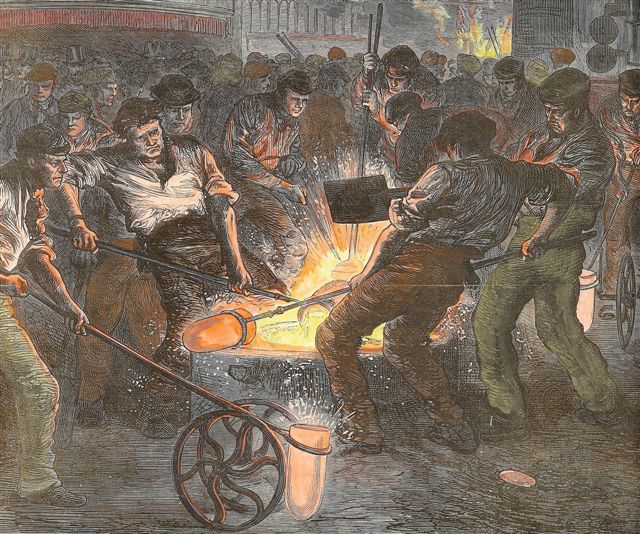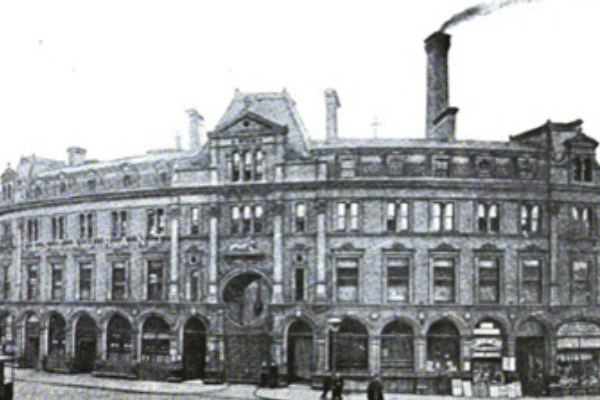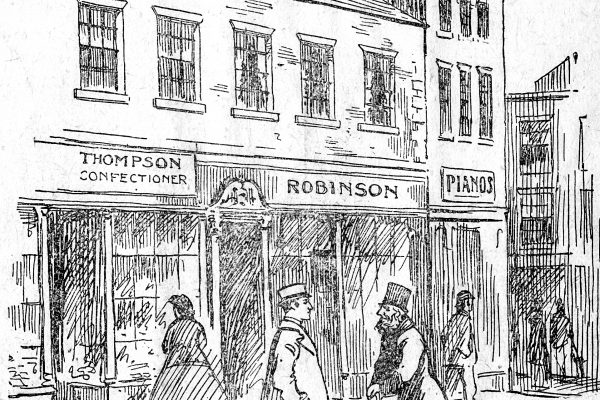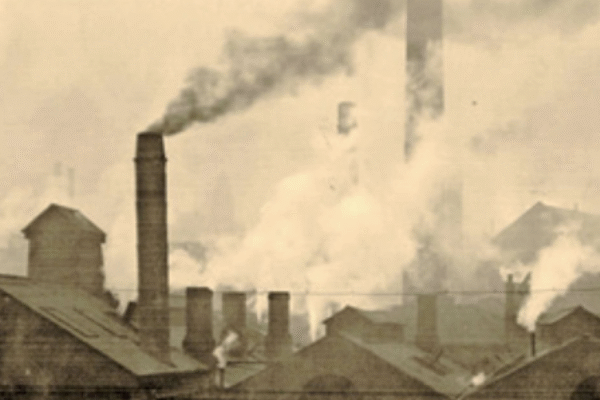
Victorian Steel Workers Teeming Steel. Source: Sheffield Industrial Museums Trust
Unlike most early industrial towns Sheffield’s growth came largely from the increasing numbers of individual craftsmen connected with making tools, rather than from mass employment in factories. Cutlers – making any tool which cuts – have been associated with Sheffield as far back as 1297. By the early nineteenth century manufacturing firms in the town were growing in number and size in response to more efficient forms of power and growing demand, facilitated by better communications and transport. In the first half of the century America provided a lucrative market, while goods of all kinds continued to be sold throughout the British Empire, which also provided the raw materials.
Sugar, vital for the confectionary industry, was a controversial import for conscientious businessmen, since it was generally produced by enslaved people working on plantations until the abolition of slavery in 1838. Confectionary however was mainly for home consumption. Only George Bassett successfully entered the export trade and, after his death in 1886, his company went on to export around the world.
In the late nineteenth century, Sheffield had a thriving brewing industry with over 30 breweries. Many of these were small businesses and over time they were taken over by larger concerns. By the 1930s many Sheffield breweries had disappeared as they were absorbed by national companies. These breweries supplied the many pubs and beerhouses in the town.







